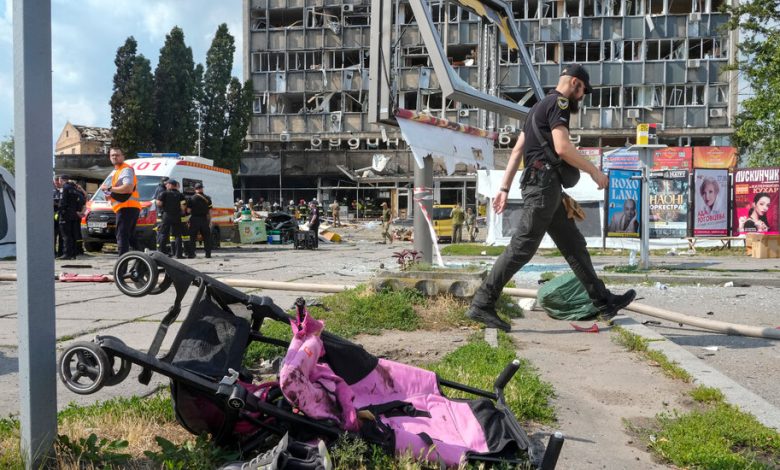At least 437 children have been killed in the war since February, Ukraine says.

At least 437 children are among more than 8,300 civilians who have been killed in Ukraine since Russia launched its full-scale invasion in February, the country’s prosecutor general said on Saturday in a grim new accounting of the war’s toll.
Andriy Kostin, Ukraine’s prosecutor general, said that in addition to the death toll, more than 11,000 civilians had been injured in the conflict. But he added that the true numbers were likely to be far higher, in part because the authorities in the capital, Kyiv, have no access to data in areas in the south and east of the country that Russian forces have occupied.
In a report published on Nov. 14, the Office of the U.N. High Commissioner for Human Rights said that 408 children were among 6,557 people killed since the invasion began and 750 others were among 10,074 injured, though it, too, said the true figures were “certainly higher.” Its data showed that March had been the conflict’s deadliest month.
Russian missiles fired from artillery positions close to front lines or over a longer range at towns and cities have caused the bulk of civilian casualties. Children were also among the victims of some of the conflict’s worst massacres of civilians, including a missile strike on a railway platform in the city of Kramatorsk in Donetsk region in April, which killed more than 50 people, and an attack on a civilian convoy in Zaporizhzhia region in September when at least 30 people died. In both cases, the civilians were attempting to flee the fighting.
In one of the war’s most poignant casualties, a 4-year-old girl with Down syndrome, Liza Dmytriyeva, died of shrapnel wounds in July after a shopping mall was struck by a missile in the city of Vinnytsia in central Ukraine. Photos of her pink and black stroller lying in the street were shared across the world.
The State of the War
- Explosion in Poland: A Ukrainian air-defense missile — not a Russian weapon — most likely caused a deadly explosion in a Polish village, a top NATO official and Poland’s president said, easing fears that the military alliance would become more deeply embroiled in the war.
- Retaking Kherson: On Nov. 11, Ukrainian soldiers swept into the southern city of Kherson, seizing a major prize from the retreating Russian army and dealing a bitter blow to President Vladimir V. Putin. Days after the liberation, evidence and accounts of torture are emerging.
- Infrastructure Attacks: In a relentless and intensifying barrage of missiles, Moscow is destroying Ukraine’s critical infrastructure, depriving millions of heat, light and clean water. For Ukraine, keeping the lights on as winter looms has become one of its biggest battles.
- Beta Testing New Weapons: Ukraine has become a testing ground for state-of-the-art weapons and information systems that Western officials predict could shape warfare for generations to come.
Ukraine’s government has made a strenuous effort to document crimes committed since the Russian invasion began, with a view to mounting prosecutions. Mr. Kostin said that, in all, 45,000 war crimes had been recorded by Ukrainian authorities.
He added that 216 people had been notified that they were under suspicion of involvement in war crimes, of whom 17 were Russian prisoners of war.
A panel of legal experts appointed by the United Nations said in September that Russian soldiers had committed war crimes in Ukraine and children had been raped and tortured.
In addition to missile strikes, Ukrainian authorities have uncovered a succession of atrocities in areas — such as Bucha, a suburb north of the capital, Kyiv; Izium in the Kharkiv region; and, most recently. the city of Kherson — from which Russian forces have been forced to retreat. Some victims were children.
The authorities have uncovered detention centers in Kherson for teenagers and said that young people appeared to have been tortured, according to the Ukrainian Parliament’s commissioner for human rights, Dmytro Lubinets.
“There was a separate area where teenagers were detained. We are now determining their ages. People are testifying that some boys looked 14 years old,” Mr. Lubinets said in a post on Facebook on Friday, adding the authorities believed it was the first time such a practice had been uncovered.
Thousands of schools have been damaged by Russian bombs and rockets, with hundreds destroyed. In an example of the misuse of children’s facilities, Oleh Synehubov, head of the regional administration in Kharkiv, said on Telegram on Friday that Russian forces had planted mines in beds in kindergartens in the region. The claim could not be independently verified.




